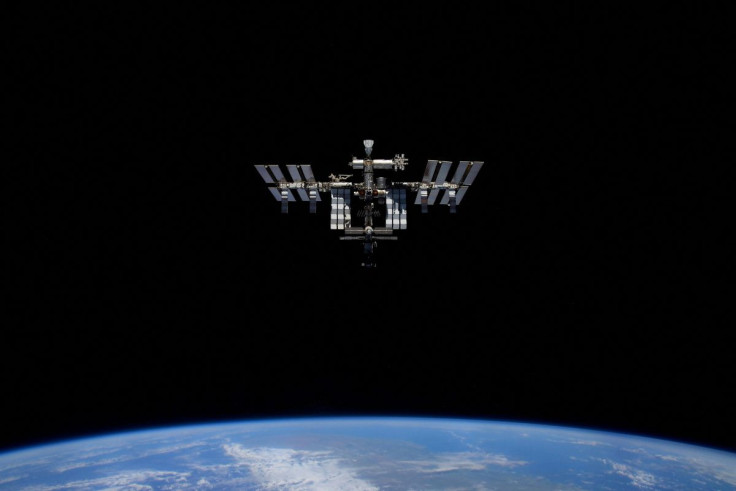ISS Moves To Avoid Russian Debris: NASA
KEY POINTS
- The ISS performed an avoidance maneuver to increase its distance from debris
- The debris was reportedly a piece of the Russian Cosmos 1408 satellite
- It's not the first time that the ISS avoided debris from the destroyed satellite
The International Space Station (ISS) had to perform an avoidance maneuver this week to avoid hitting Russian orbital debris.
The ISS fired its Progress 81 thrusters for the Pre-determined Debris Avoidance Maneuver (PDAM), NASA said in a late Monday statement. According to the agency, the maneuver was done at 8:25 p.m. EDT, during which time the thrusters were fired for five minutes and five seconds.
The U.S. Space Surveillance Network regularly watches out for the trajectory of orbital debris, and an ISS maneuver is made if the "chance of a collision exceeds 1 in 10,000." In the case of the debris that the ISS moved for on Monday, it would have passed "within about three miles from the station" had the station not performed the maneuver.
"The PDAM increased the station's altitude by 2/10 of a mile at apogee and 8/10 of a mile at perigee and left the station in an orbit of 264.3 x 255.4 statute miles," NASA noted.
The station raised its orbit today maneuvering to avoid orbital debris that could have passed within about three miles of the orbiting lab. https://t.co/e4lUZzPvtr
— International Space Station (@Space_Station) October 25, 2022
The move was intended to give the ISS a bit more distance from the debris, which happens to be a piece of the Russian Cosmos 1408.
The Cosmos 1408, reported CNN, was the defunct satellite that Russia destroyed in an anti-satellite test in 2021, creating a potentially dangerous debris field. At the time, the U.S. called it "dangerous and irresponsible," noting that the move will pose a threat to the sustainability of space.
Sure enough, this is not the first time that the ISS has had to perform an avoidance maneuver to avoid debris specifically from the Cosmos 1408. It also had to do so back in June, when the Progress 81's thrusters were fired for four minutes and 34 seconds for the PDAM.
And even earlier, in January, a piece of debris from the anti-satellite test came as close as 14.5 meters away from a Chinese satellite, an incident that the Chinese government described as "extremely dangerous," noted CNN.
Indeed, the ever-growing number of orbital debris continues to pose threats of collision in space. As NASA explained, even small paint flecks can be dangerous and damaging to a spacecraft as they're traveling at fast velocities.
According to the European Space Agency (ESA), the probability of "catastrophic collisions" also increases as the number of debris does.
"Doubling the number of objects will increase the collision risk by approximately four times," the agency noted. "As the debris population grows, more collisions will occur."

© Copyright IBTimes 2025. All rights reserved.






















